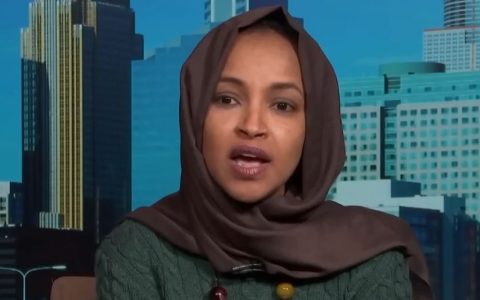
It wasn’t long ago that Trump was attacked not once, but twice by people who intended him harm.
And now a massive development in the Trump assassination case is dropping jaws.
Rep. Clay Higgins says he’s armed with evidence that challenges key parts of the FBI’s official narrative on the July 13 attempted assassination of Donald Trump. The Louisiana Republican, known for his law enforcement background, is gearing up to intensify his independent investigation in the next Congress.
As a member of the bipartisan House task force probing the attack, Higgins has been working on a parallel investigation into what he claims is evidence the FBI either withheld or misrepresented. The task force wrapped up its inquiry Thursday and plans to release its final report soon, but Higgins says his work is far from over.
“I’m not done by a long shot,” Higgins told *The Washington Times*. “There’s many things that are not covered here in this report that I have in my investigative file.”
Higgins’ findings raise questions about the FBI’s account of how Thomas Matthew Crooks, the gunman who fired at Trump during a campaign rally in Butler, Pennsylvania, was stopped. Crooks, who managed to fire eight rounds—one grazing Trump’s ear—killed a rallygoer and injured two others before being taken down.
The FBI claims a Secret Service countersniper neutralized Crooks with a single shot, but Higgins contends Crooks was already injured by Butler County Emergency Services Unit officer Aaron Zaliponi, rendering him unable to continue shooting.
Higgins says his ballistics analysis and evidence back Zaliponi’s testimony, which the FBI disputes.
“His one round — shot No. 9 at nine seconds from the first round fire — hit the buttstock of Crooks’ weapon, smashed that weapon into his jawline,” Higgins explained.
“There’s a corresponding injury on Crooks’ jaw that I’ve observed from the medical examiner’s report, and those photographs precisely match the broken buttstock of Crooks’ rifle.”
While the FBI denies forensic evidence supports Zaliponi’s account, Higgins points to a photo of Crooks’ rifle showing damage to the buttstock as proof.
The bureau maintains its stance that the rifle was fully operational and Crooks was only stopped by the countersniper.
Higgins also criticized gaps in the FBI’s narrative, particularly the unexplained nine seconds between Zaliponi’s shot and the countersniper’s kill shot.
“If [Crooks] had not been stopped by the Butler County ESU shot No. 9, then you would presume he would have continued to fire,” he said, estimating Crooks could have fired 15 additional rounds during that time.
Adding to the controversy, Higgins revealed missing evidence from Crooks’ autopsy, including postmortem X-rays showing bullet fragments that were not retrieved. “Who made that decision? Was it the FBI?” Higgins asked. “The fragments are gone.”
Higgins expressed frustration over what he described as the FBI’s lack of transparency. He claimed limited access to key evidence forced him to conduct independent ballistics testing, noting, “They’re operating in silos.”
Despite these challenges, Higgins remains determined to uncover the truth. With support from Republican leaders, he anticipates taking a leading role in a potential new subcommittee under the Oversight and Accountability Committee. “The full truth should eventually be revealed,” he said.
Higgins is also delving into Crooks’ background to understand what drove him to commit the attack. While the FBI has not identified a motive, Higgins believes Crooks’ mental state deteriorated in the year leading up to the shooting. “What caused this guy to become a shooter talking to himself in the final year of his life?” Higgins asked.
As his investigation progresses, Higgins vows to present his findings calmly and systematically. “It puts me in a position where I have to slowly and calmly present all the evidence to drag along these huge agencies to be in alignment with what I know to be the truth,” he said.
Stay tuned to the DC Daily Journal.





